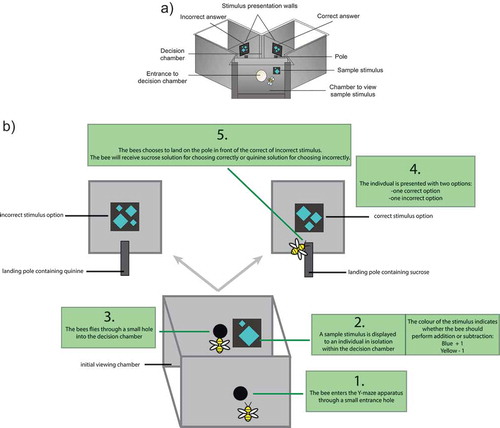Figures & data
Figure 1. A schematic showing the sequential process of individual bees entering the Y-maze apparatus, viewing the initial sample stimulus, flying into the decision chamber, and then making a choice between the correct and incorrect stimuli. (a) The overall view of the Y-maze. The positions of the correct and incorrect options (left or right arm of the maze) were changed pseudo-randomly to avoid bees acquiring a side preference (preference to always fly to the left or right). (b) An example of the process of using the Y-maze by a bee in the ‘addition’ trials.

Figure 2. Examples of trials in which bees could not employ the rules of ‘choose the most similar stimulus’ (a–b), ‘choose the lowest quantity’ (c), or ‘choose the highest quantity’ (d). Stimuli were never shown to a bee more than once in training, and in testing stimuli were of a novel shape and pattern, thus bees could not use associative mechanisms to solve the task.

